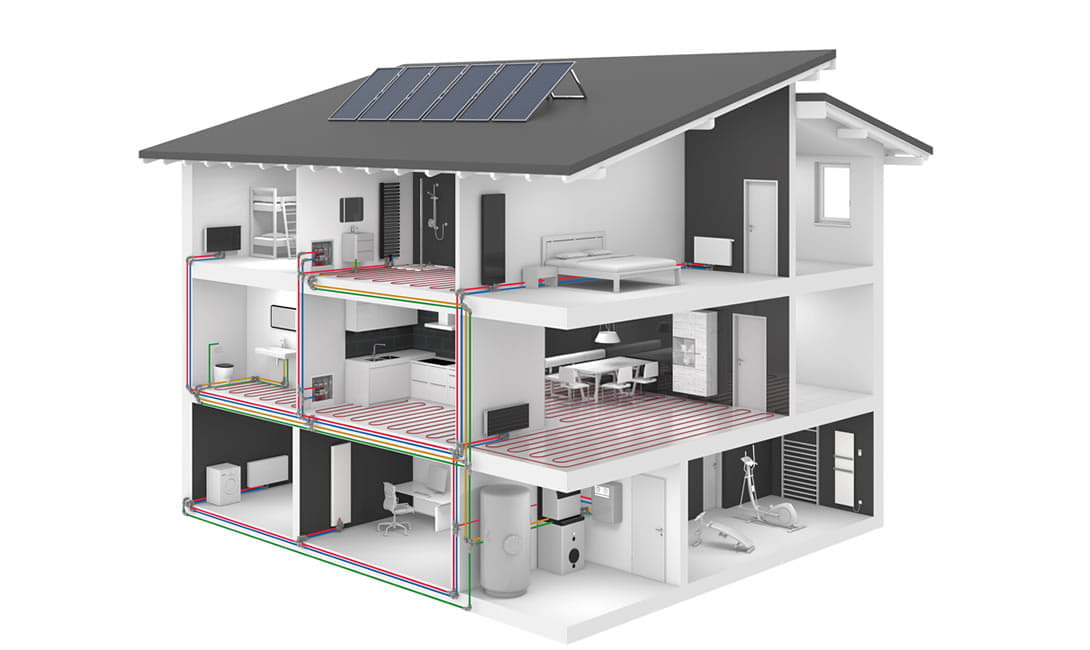- Sizing of products
- Insights
- Radiators
- Underfloor heating
- Product info
- Work smarter
The technological evolution and high demands of modern heating systems
Modern radiators
In the case of panel radiators, the main aim of technological improvement in recent decades has been to increase performance. There are a number of starting points for this, such as the internal routing of the heating water or the so-called convection sheets. On these plates between the front and rear radiator plates, the heated air rises like in a chimney. Shape and arrangement determine the later heat output of the radiator.
Over the years, the content of the radiator’s water-bearing channels has become smaller, but thanks to the convection sheets the heat-radiating surface has become larger. This means less water and less energy are required for a higher performance and a faster reaction to changing heating loads. Today, there are even fan-assisted radiators, such as the Ulow E2, which can be operated at temperatures below 45 °C.
Modern underfloor heating systems
The demands for an underfloor heating system are high. One has to pay attention e.g. to low installation heights, high heat output, and a quick and easy installation. Today there are new underfloor heating systems that react significantly faster than their predecessors. For example, the highly dynamic systems ts14 R and klettjet R.
In a research project, the Technical University of Dresden simulated heating-up times for various floor heating systems. The results show that a living space heats up much faster with the new, highly dynamic underfloor heating system. To be more precise, the room temperature rises 2.7 times faster with the ts14 R than with a classic underfloor heating system. When the room is heated up, the desired temperature is reached in significantly less than half the time. If cooling is also required or if the focus is on ecological renovation, the eco clay system is also an option.
High demands for planning and execution
While modern heating systems are quite sophisticated and offer various advantages, the other side of the coin is that good planning and the right execution are becoming more and more important. First of all, it must be determined which heating system is best suited to the existing building and the individual requirements and how it must be configured.
Then, the planning must be implemented professionally by an expert. This includes hydraulic balancing, correctly designed pumps, an optimally adjusted heating curve as well as efficient and convenient control technology. Luckily, today, installers and planners have access to highly specialised software for the planning and design of the entire building services. Purmo offers various services and tools that are also available to private individuals. A good example of this is the heat output calculator with which the dimensioning of the radiator can be roughly estimated (Attention: this tool does not replace the exact calculation and planning by a specialist!).

